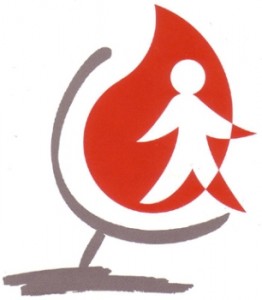World Blood Donor Day is celebrated each year to highlight the contribution voluntary unpaid blood donors make to public health. This year’s slogan, “New blood for the world,” aims to raise awareness of the role young people play in maintaining supplies of safe blood.

“This is the first time we have data for blood donation by age,” said Carissa Etienne, Assistant Director-General for Health Systems and Services at WHO. “It’s important to see that in many countries a lot of young people are already giving blood. Countries can use this to encourage more young people to become donors.”
Figures from the 2008 Blood Safety Survey1 reveal that 14 countries collect more than half of their total donations from under 25s: Botswana, Burkina Faso, Gabon, Guinea, India, Jordan, Kiribati, Lao People’s Democratic Republic, Malawi, Papua New Guinea, Republic of Korea, Tuvalu, Viet Nam, and Zimbabwe .
Standard age limits for blood donation are 18 to 65 years of age, but in some countries donations are accepted from people as young as 16 years, provided their parents consent. Voluntary unpaid donations are preferred over paid donations because supplies are generally safer, and there is less risk of donor exploitation. Evidence suggests that voluntary donations also promote other healthy lifestyle choices among young donors.
“Young people are the hope and future of a safe blood supply in the world,” said Dr Neelam Dhingra, Coordinator of Blood Transfusion Safety at WHO. “We are confident more countries can achieve 100 per cent voluntary unpaid blood donation if they focus efforts on engaging young people.”
Today, 62 countries obtain all, or nearly all (more than 99%), of their blood supplies from unpaid donors – up from 57 last year. Belarus, Islamic Republic of Iran, Kenya, Malaysia and Zambia are the latest to join this list.
“In 77 countries, however, donations are still well below the level required to meet patients’ needs,” Dr Dhingra added.
WHO recommends that blood donation by at least 1% a country’s population is generally sufficient to meet a country’s basic requirements for safe blood. Requirements are higher in countries with more developed health systems. Among the greatest needs: to replace blood lost in childbirth (a major cause of maternal deaths worldwide), and to treat the anaemia that threatens the lives of thousands of children who have malaria or are undernourished.
In May 2010, WHO Member States agreed on a resolution on the availability, safety and quality of blood products. The resolution paves the way to increase access to safe blood transfusions and to safe and affordable blood products in developing countries. It also echoes the Melbourne Declaration, released on World Blood Donor Day 2009 in Melbourne, Australia, which calls on countries to achieve 100% voluntary unpaid blood donation by 2020.
Starting 14 June, a week-long programme of high-profile events celebrate voluntary blood donation. This year, international World Blood Donor Day events are taking place in Barcelona, Spain and at Expo 2010 in Shanghai, China. A number of communities, including Barcelona, will gather volunteers in a prominent public space to stand together all dressed in red in the form of a “blood drop” as part of their celebration.
Source: World Heath Organization




